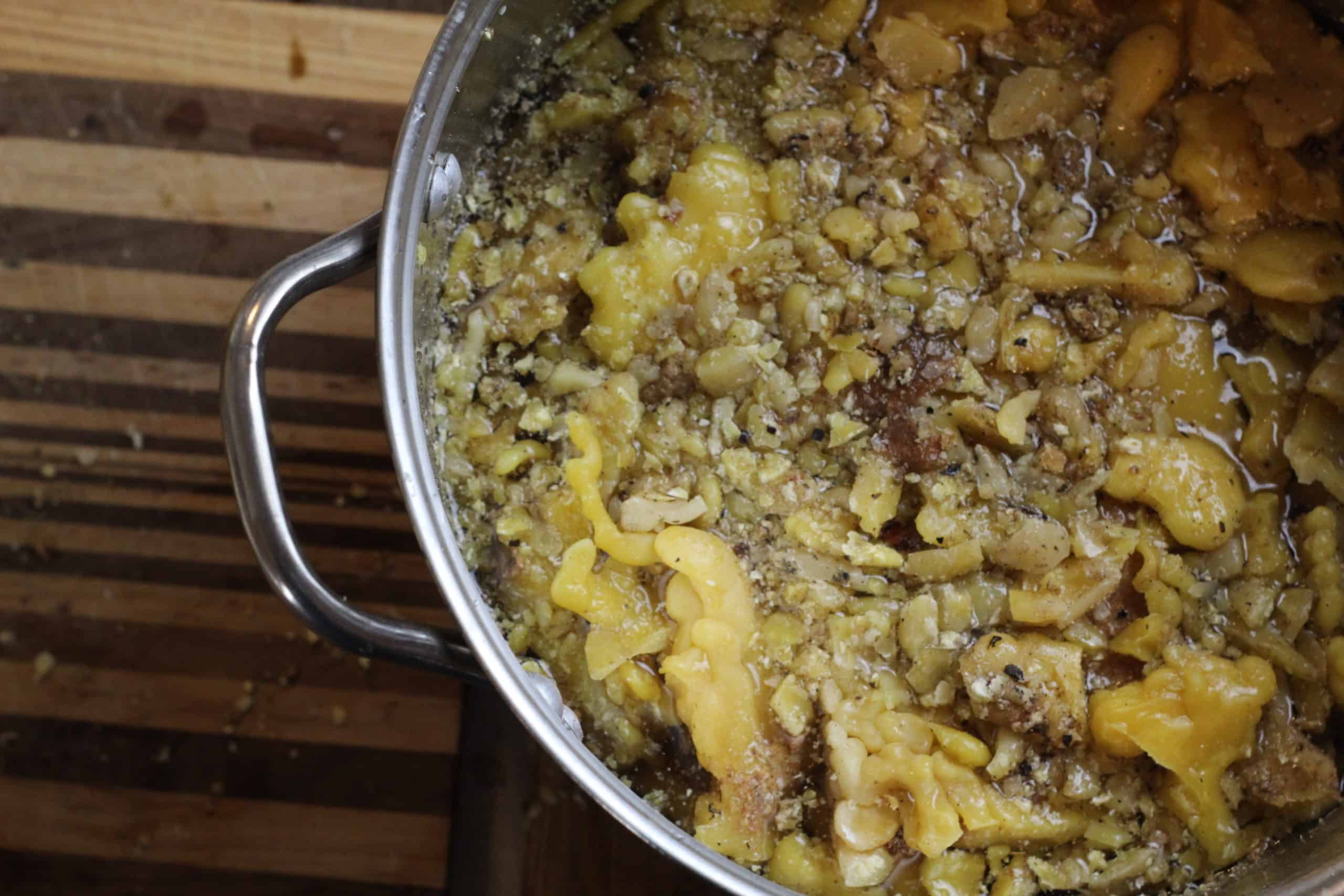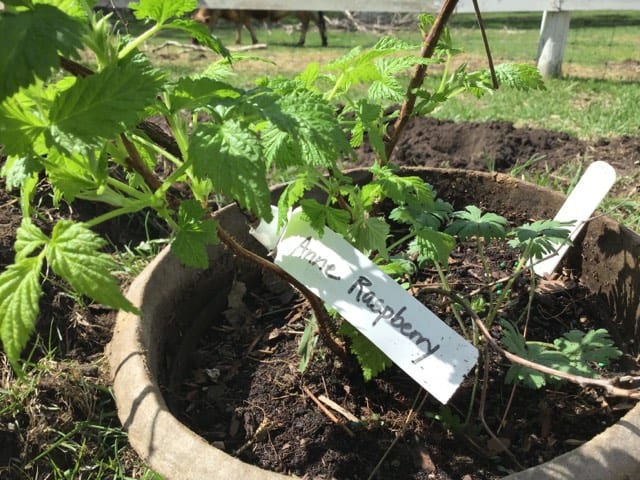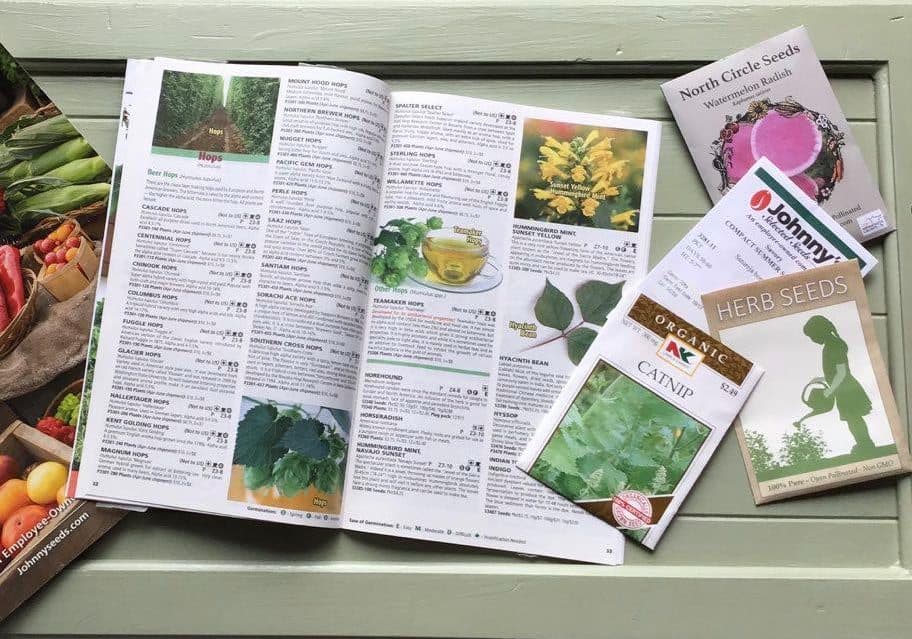Rotational Grazing for Beginners
Are you new to the idea of rotational grazing or wondering how you can do it on your farm? Here is a simple run-down on rotational grazing for beginners.
What is Rotational Grazing?
Rotational grazing is the practice of moving your livestock from one grazing area to another. Animals are limited to a certain area each day, then are moved to a new paddock/pasture within a certain amount of time. Depending on your set up the animals might be moved once a week, or as much as twice a day.
The main alternative to rotational grazing is continuous grazing. That is where you have one large pasture or paddock and you turn your animals out in it every day. They have free range to roam the whole area, eating whatever they want in the large pasture.
Why is Rotational Grazing Important?
Rotational grazing is one of those things I get really excited and passionate about. It is such a simple concept and it can have incredible benefits for animal health, land regeneration, and wildlife. Let’s take a look at each of these.
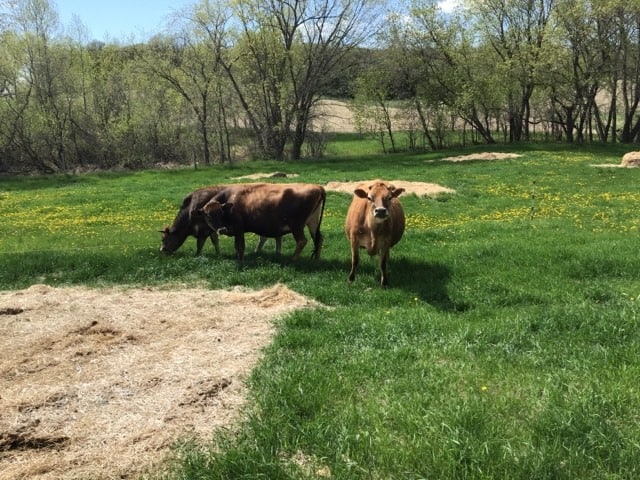
Animal Health
Livestock that is rotationally grazed properly tends to have better health outcomes than those that are continuously grazed. This is because they have access to a wide variety of robust forage for eating, and they are less likely to pick up parasites on fresh pasture. The animals are also getting exercise and allowed to do what they naturally do, which is move to new pastures.
Pasture Regeneration
Rotational grazing does wonders when it comes to the health of your grass.
Pastures that are continuously grazed never really get a chance to recuperate, because they are constantly being eaten down by livestock.
When a pasture is rotationally grazed, the livestock come in and take a few bites from every plant. Nothing gets eaten down to the nub, everything is eaten equally. When animals continuously graze, they’ll keep going back to the tastiest plants and eat those down, leaving the less choice plants alone.
Think about that for a second. If the good plants are eaten down so they won’t recover quickly, and the less tasty plants aren’t eaten much at all, which plant do you think is going to be healthier and spread out more in your pasture?
When plants are lightly grazed, this stimulates them to grow more, creating lusher pastures faster.
This also leads us into our next topic…
Carbon Sequestration
Don’t let that fancy term intimidate you. Carbon Sequestration simply means the process of taking carbon dioxide out of the air and storing it someplace else.
Pastures that are rotationally grazed do this naturally! Here’s how it works.
Grass and all plants grow by taking in carbon dioxide. Now let’s say you have lush grass that is three feet high. Under the ground, it will have approximately the same length of roots, three feet. Now along comes Juneberry the Jersey cow. She eats the top foot of that grass, then moves on.

Underground, one foot of the root system will simply die off as the plant now focuses its energy into regrowing the grass up top.
Right there, you have sequestered carbon. Carbon dioxide was taken in by the plant and used to grow those roots, now those roots have died back, and they are going to decompose under ground and create more fertile soil that will feed your grass.
As that grass is now hustling to grow more, it is going to suck up more carbon from the atmosphere, grow more roots, then Juneberry will come along again to eat it, and the cycle continues.
Is that amazing or what??? Heck, some folks are even getting PAID to sequester carbon this way because it is so effective.
Wildlife
With pastures left to have several inches of grass, you are creating habitat and resources for birds, snakes, small mammals, bees, etc. These animals are all part of creating a healthy ecosystem on your farm.
How to Rotational Graze
Have I convinced you that rotational grazing is amazing? Good. Let’s look at how to do it!
Plan your Paddocks
Our farm is small. We simply do not have enough grass to feed all our animals so we have to graze ditches, field perimeters, etc. Even still, we have a rotation that looks like this.
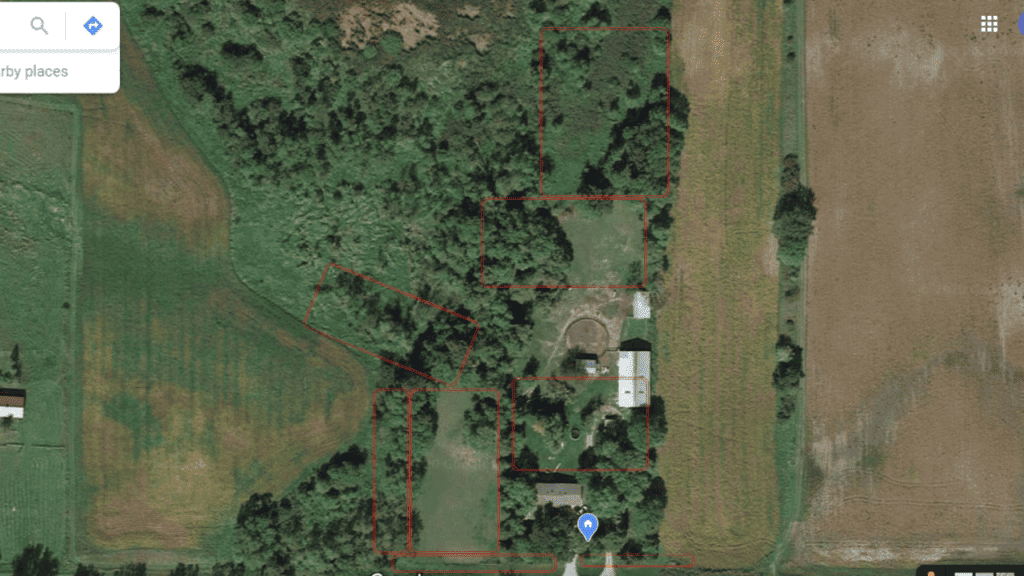
I know it is kind of hard to see, but let’s walk through this. The first large rectangle left of the house is our main pasture. We get 6 days of grazing there, split into smaller paddocks. Then we move to the skinny strip left of that. We get 1-2 days out of that. Then we rotate clockwise to the long angled strip. We get about 3 days there. Then we jump up to the ditch to the left of the house. That’s worth 1 day. Then we graze the backyard. That’ll give us 2 days. Then we graze the other ditch and area between our property and the field. That’s 2 days. Then we move to the rectangle behind the round pen. That’s worth 2 days. Then the rectangle north of that. That’s 3 days. The goal is to reach 21 days between grazings, I’ll talk more about that below.
You’ll have to look at your own farm layout, how many animals you have, and what your resources are. I highly recommend using temporary fencing at first as you start rotationally grazing, because it will take a little time for you to figure out just how long it will take your herd to graze down an area. There are more educated ways of calculating your forage needs that would also be a smart way to go.
Timing
Our goal at the farm is to have a minimum 21 days from the time a paddock is grazed to its next grazing. This is for two reasons. One, that will give the grass enough time to grow back. Two, parasite larvae become ineffective after 21 days. So if your animal does have larvae in their poop, 21 days later they can’t do harm to your animals. Source.
Make sure that when your animals graze ,they do not eat the grass lower than 4 inches. This is again for two reasons. One, that should leave growth nodes on the grass intact. Leaving these growth nodes will allow for faster regrowth. Second, those little parasites have a hard time climbing up the grass more than about 4 inches.
You want about 50% eaten, 30% trampled, and 20% left.

You’ll also want to keep an eye on swampy or wet areas if you have them, and try to graze these during dry spells.
You also want to graze your pasture before it gets mature seed heads, as the animals won’t like it as much and will eat less.
Set Perimeter Fence
If you don’t already have perimeter fence to work with, after you’ve used temporary fencing for a trial run, you can set up a permanent or semi-permanent perimeter fence. If you use electric, this might mean a high tensile fence or similar.
Things to keep in mind:
- Gates
- Alleyways
- Water Access
- Electricity
Select Move-able Fence Options

Most people that do rotational grazing will use electric fencing. Once you have a solid perimeter set up, you will make your paddocks with your move-able electric fencing (unless you are making permanent paddocks that you’ll just cycle your animals through, that works too!).
On our farm we have two reels with polywire and step-in posts. We run the electricity off of our main perimeter fence.
If you are not able to access electricty that way, you’ll need a solar fence charger and a ground rod to haul around with your fence.
Plan for Water and Shade
We have a very small acreage so it isn’t a big deal for our animals to hoof it back to the main water trough for a drink. If you have a larger pasture though you’ll need to figure out where you’ll place troughs so animals can get to it and you can get water to it.
You’ll also want to make sure there is a spot where animals can get out of the direct sun, especially on hot days.
Make it Happen
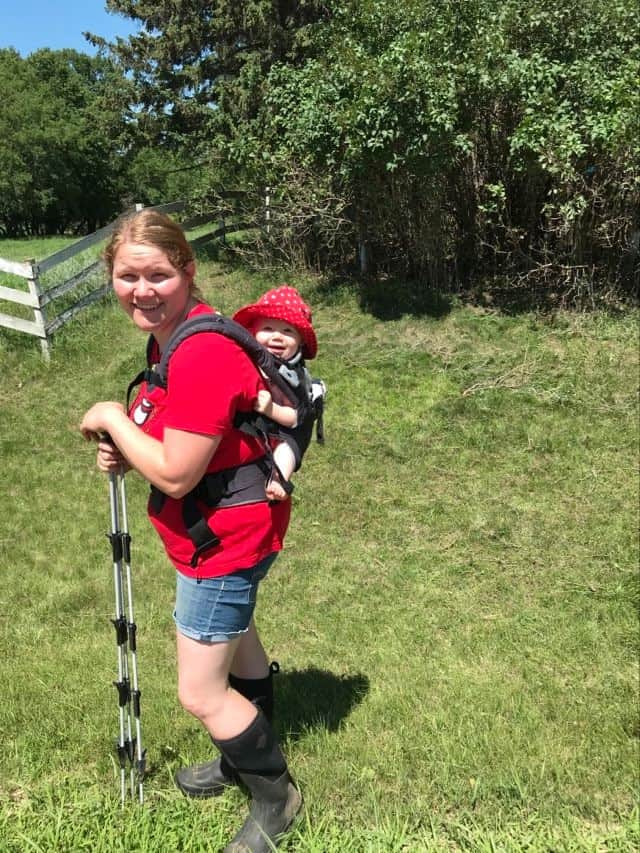
Even with a small acreage, any amount of rotational grazing will make a difference for your animals and land.
This was just a brief overview but there are many great resources out there if you want to dive deeper.
I recommend Greg Judy’s YouTube channel for inspiration. Gabe Brown does rotational grazing and grows crops and offers farm tours (at least when we aren’t in a pandemic) and lives in the Bismarck, ND area.
Go forth and graze!
Pin it for Later



